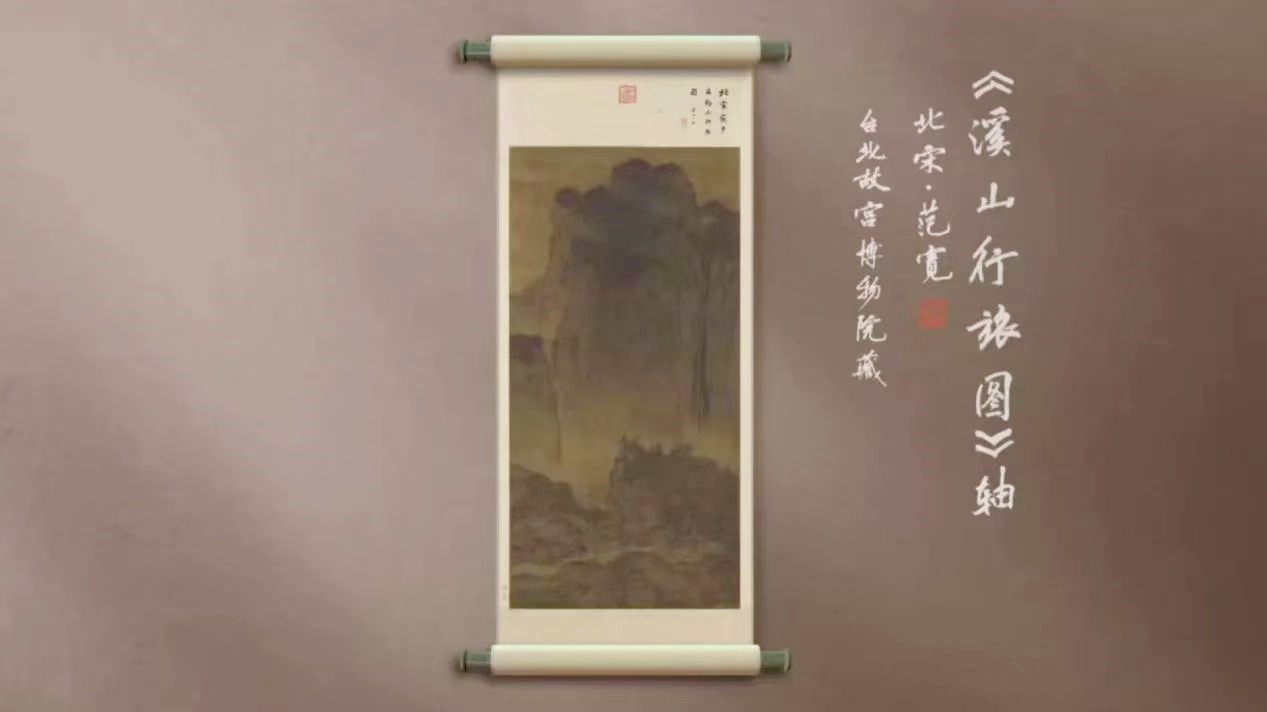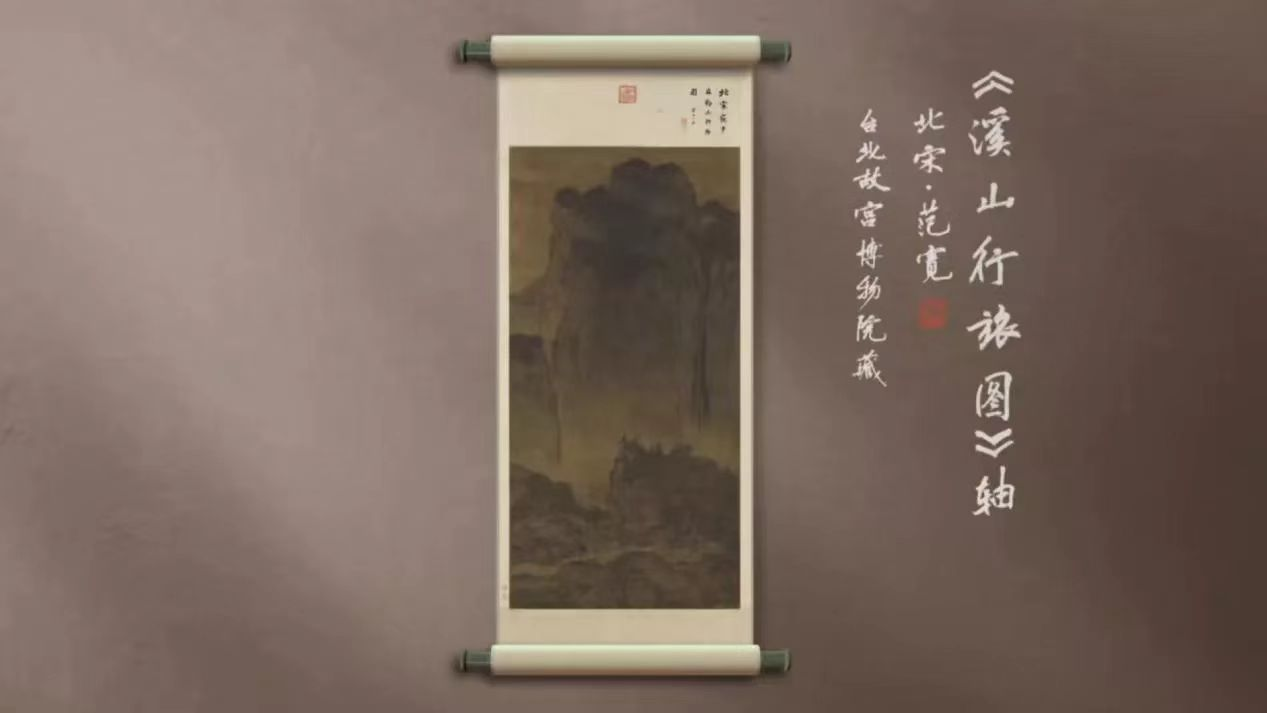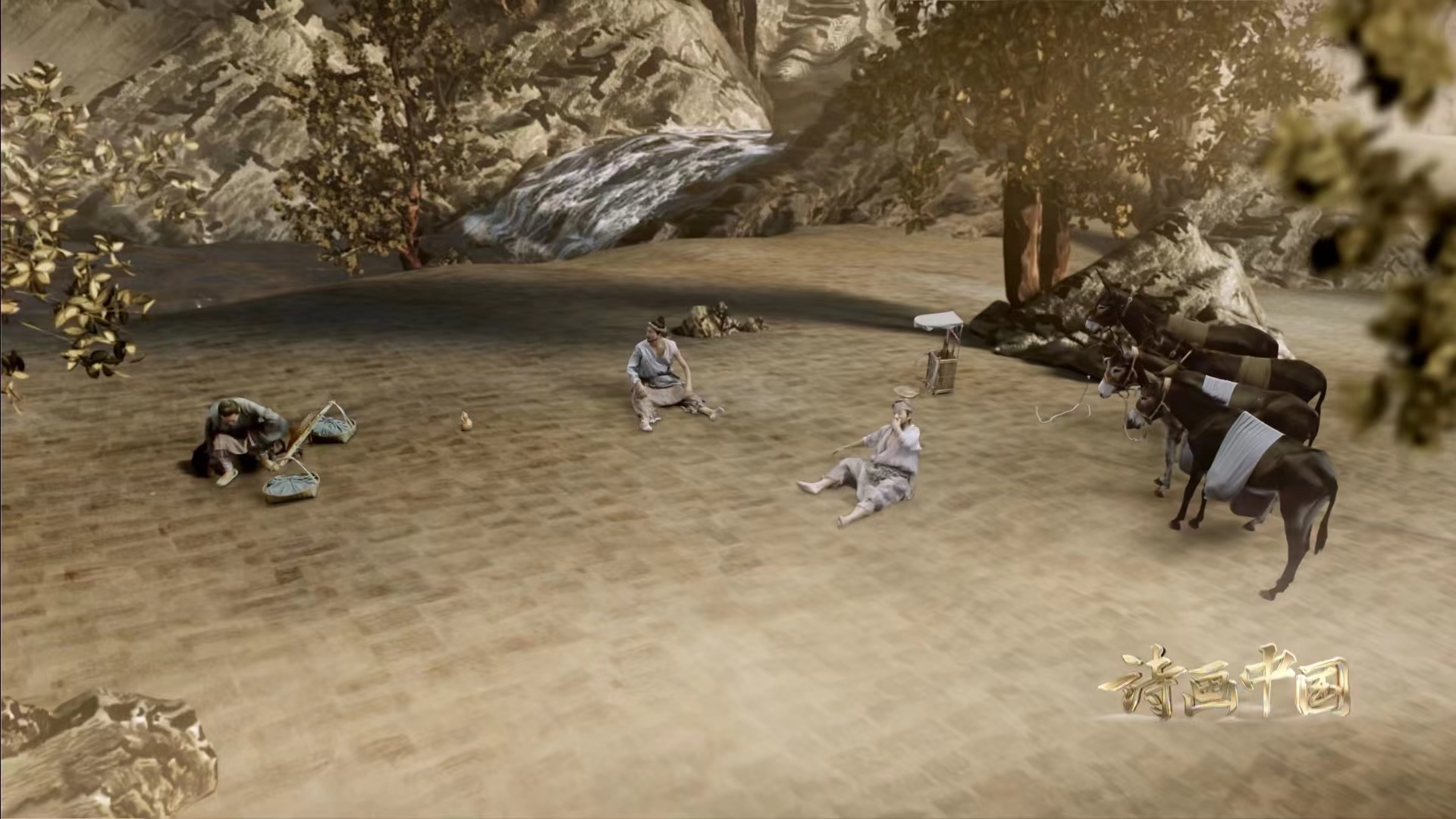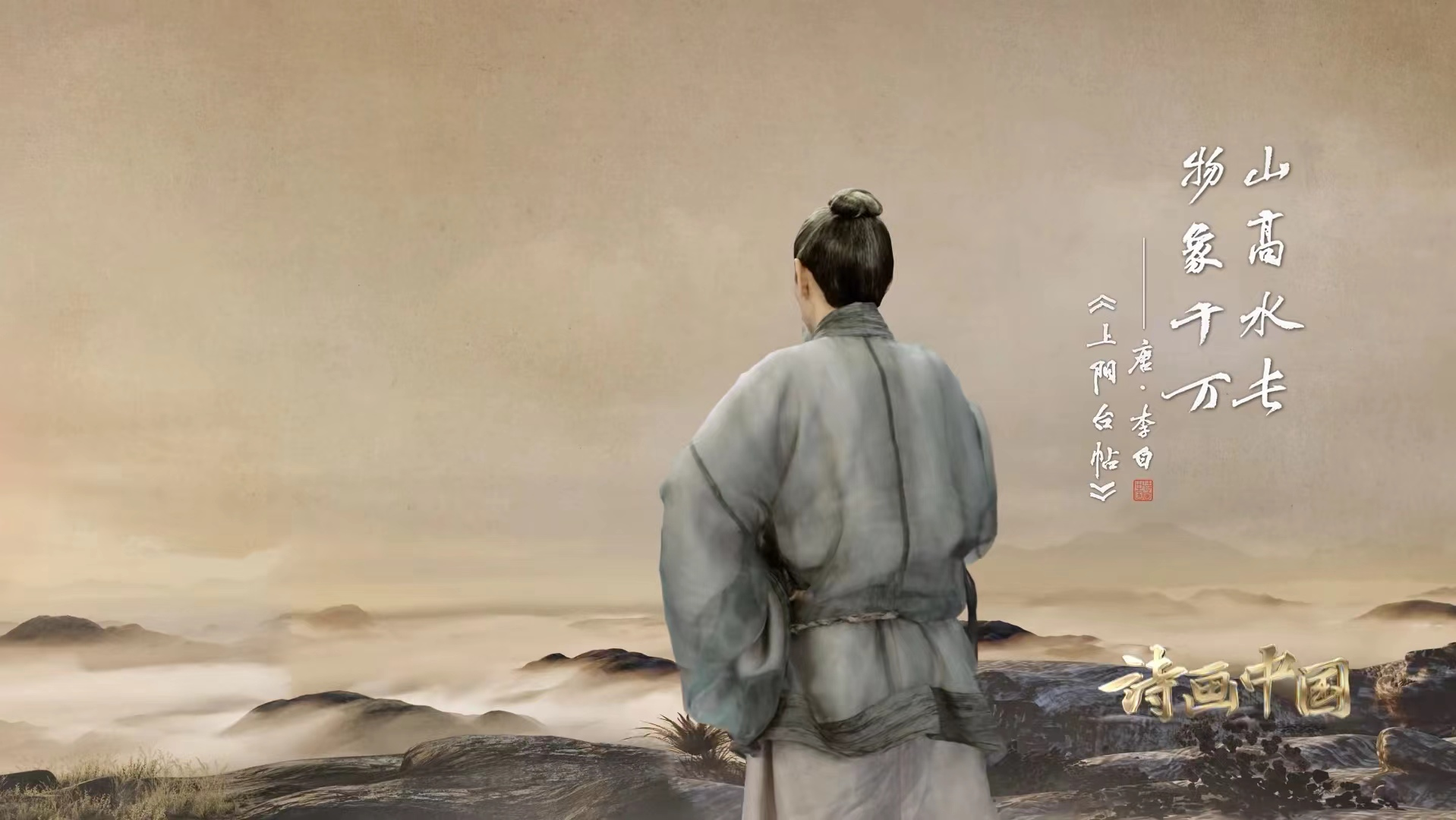Why did ancient Chinese artists have such a deep love for landscape paintings? The answer may be found in the most acclaimed work of Fan Kuan, considered the finest painter of this genre from the Song Dynasty.
07:01

Fan was one of the most famous painters in the Northern Landscape Painting School during this period. The mountains rendered under his brushstrokes were majestic and craggy, different from those presented under the "Southern School," which used smoother lines to portray the elegant landscapes south of the Yangtze River.
In Fan's landscape painting, viewers can see a real mountain and the philosophical idea that humans, rather than ruling the world, coexist with other living creatures in nature. The idea is well embodied by his magnum opus, "Travelers Among Mountains and Streams." The cultural program "China in Poetry and Painting," produced by China Media Group, draws on innovative filmmaking techniques to create an immersive landscape. In one instance, an elderly man wearing a bamboo hat is shown encountering a caravan of donkeys while ambling along a rustic path - going above and beyond what was possible to show in the painting itself.

"Travelers Among Mountains and Streams," a landscape painting by Fan Kuan. /CGTN
"Travelers Among Mountains and Streams," a landscape painting by Fan Kuan. /CGTN
Collected by the Taipei Palace Museum, the work "Travelers Among Mountains and Streams" was much lauded by Chinese artist Dong Qichang during the Ming Dynasty as "the best painting from the Song Dynasty." As the 2.06-meter-high hanging scroll unfolds, the classic Chinese perspective of three planes becomes evident – far, middle, and near.
The towering mountains make up the bulk of the picture, creating an imposing effect. A waterfall as slender as silk falls from the heights above, breaking the silence of this dignified scene. Below the mountains are gentle slopes, gurgling rivers, and luxuriant trees. Not far away, a team of business merchants carrying cargo walks along the river. Like raindrops, huge stones are rendered with jagged outlines and filled with dabs of the brush. This technique was used in Chinese landscape painting to highlight the hardness of the rock and the eternal nature of the mountains, according to Fan Di'an, dean of the Central Academy of Fine Arts.

An animation showing an old man encountering a caravan of donkeys on the path. /CGTN
An animation showing an old man encountering a caravan of donkeys on the path. /CGTN
According to Professor Wu Jian at Zhengzhou University, in Fan Kuan's early years he modeled the works of Jing Hao and Li Cheng. But later he realized that nature was the best teacher if he wanted to truly master the art of landscape painting. As such, he spent the rest of his life as a recluse living in the rugged mountains in Huayuan, Shanxi, devoting himself to observing nature. Fan finally developed his own landscape painting style – using bold brushwork as powerful as cast iron, which is well embodied in "Travelers Among Mountains and Streams."

An animation showing an elderly man reading a poem on a hilltop. /CGTN
An animation showing an elderly man reading a poem on a hilltop. /CGTN
According to Professor Kang Zhen of Beijing Normal University, Fan Kuan's landscape paintings are seldom merely representations of mountains and waters as they appear to the human eye. Instead, they are expressions of the mind and heart of the individual artist. By painting his human subjects at such a diminutive scale compared to the size of the mountains, Fan expressed his worldview that mankind only represents a tiny part of the vast cosmos. Also, human lives are relatively short, whereas mountains are static and eternal. With this work, Fan reached the peak of his landscape painting art, standing on the shoulders of past masters to blaze a new trail and leave an enduring legacy with his influence on Chinese art.